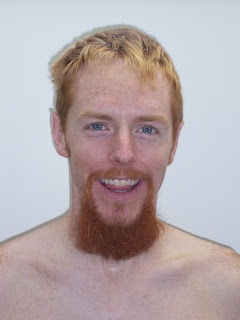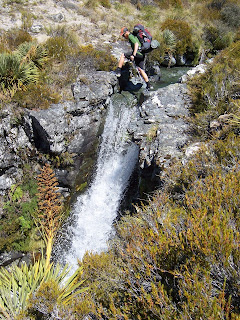




Wow, what an ending. Stewart Island was amazing, definitely one of our favourite sections. We didn’t want to come home. It was everything we had expected and more.
Once again we got lucky with the weather. We left the DOC office on our first day to a forecast that predicted rain for the next 9 days. The information brochure about the island said that it rained 275 days a year. Seeing as it hadn’t rained properly in over a month, we figured it was overdue and our luck with good weather had run out. Not so. We ended up having rain a couple of nights but other than that it was fine, just a bit overcast. We couldn’t complain, it made for a nice hiking temperature.
We walked for 13 days over the North West and Southern Circuit tracks that go in a loop around the top half of the island, following the coastline. We walked through bush every day, with the track dipping down to amazing beaches. Each one was different. The thick bush went right down to the coastline, with the only bad part being the hook grass that lined parts of the track. I had shaved my legs in Invercargill so didn’t have too bad a time with it. Dennis was another story. The nasty hooks would rip at his leg hairs as they gripped on, then rip again as he pulled them off. There’d be times when he’d spent five minutes de-hooking himself, only to be covered again straight away.
The track was what you would call undulating. Up, then down, up, then down… When we left Halfmoon Bay at the start my pack weighed 18kg, Dennis’ weighed 22kg. These were our heaviest packs. We did our best to pack light food but there’s only so much you can cut out and still survive for 13 days. My pack didn’t make me a happy tramper on the first few days, those hills were hard. Normally I like hills – they give challenge and rewarding views, but adding a third of my body weight to my back slowed me down. Dennis, of course, was fine so we ate out of my pack for the first couple of days then I was fine. Back to loving the hills again.
As I mentioned in our last post, Stewart Island is renowned for it’s mud. The mud was great for us, you could avoid or walk over it, although even after over a month without rain the ground was definitely still very squishy in parts. There were sections on the Southern Circuit that required some innovative manoeuvring to get around the mud. And this wasn’t your typical, squelchy mud. This was bog. Big black holes of unknown depth, strange smell and a weird film covering the top. What you would call a ‘no fall zone’, as we teetered over the top on precariously placed branches and tree stumps. We were dirty enough after 2 weeks without showering without falling into something like that.
We had a much more social time on Stewart Island than we’d had the opportunity to have during the rest of our trip. For the first time we stayed with the same people in the huts over multiple nights. We met groups of hunters who showed us penguins, trampers from all over Europe and America, and Stewart Island locals. This really made our trip more memorable.
One of the biggest highlights of the island was seeing kiwi! Most people hardly ever get the opportunity to see these flightless, nocturnal birds that form a key part of our national identity, but down here they’re not nocturnal. We saw 5 of them, at various times during the day as we were walking along the track. We were determined to see at least one, getting up early one morning to hunt around East Ruggedy Hut where there had been sightings. But the easiest thing was just to stumble across them. You can definitely tell there isn’t much survival instinct going on with these birds, although their legs are really strong to fight off other animals. We were able to watch one bird for 40 minutes as it fossicked around in the undergrowth. We were able to get within a few metres of it, creeping quietly on the moss. It’s response to hearing us would be to put it’s head up for 2 seconds, look around, then go back to eating. We’d just freeze, then keep moving when it had forgotten about the noise. They were a very cool sight, and we feel privileged to have seen them in such close range. We also saw the endangered Yellow Eyed Penguin, White Tailed Deer, Shags and countless other native birds.
But now we’re finished for good and back in Auckland which feels a little weird. We’re left with a feeling of ‘now what?’, plan the next adventure I guess! I’m not happy with the idea that from now on, tramping is just a recreational activity, like it is for everyone else. It’s not what we ‘do’. But it all had to come to an end at some point, we had an amazing time. We’ll be putting more detailed route information on our website soon for anyone who is planning on doing this trip in the future. We’re open to ideas for interesting, challenging adventures if anyone has any ideas.
Alice
Photos:
The chain link sculpture at the start of Rakiura National Park
Coastal outlook
Yellow Crested Penguin
Dividing up the cheese - making sure we have enough for 12 lunches
View from Mt Anglem, the highest point on Stewart Island













































